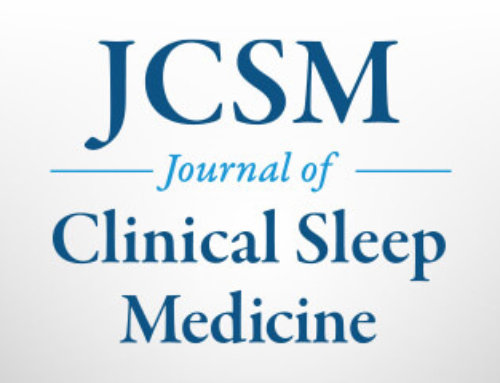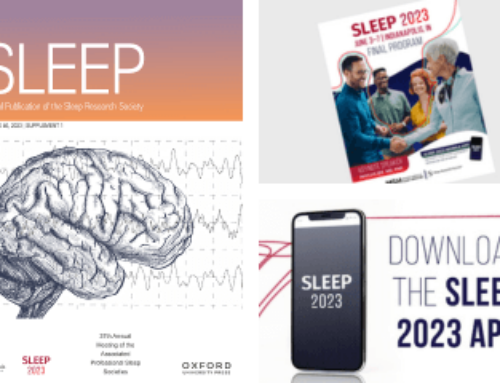WESTCHESTER, Ill. – Research has shown a strong relationship between weight and obstructive sleep apnea (OSA). Your neck gets thicker as you gain weight. This increases the level of fat in the back of the throat, making your airway more likely to be blocked. Because exercise reduces body weight, it has been suggested as a potential intervention for mild to moderate OSA. In an effort to answer the question as to how ready OSA patients are to engage in exercise, a study published in the December 15 issue of the Journal of Clinical Sleep Medicine (JCSM) features the Stages of Change, a construct of the Transtheoretical Model (TTM) of behavior change.
The study focused on 255 patients attending a public hospital based sleep disorders center in Queensland who were being tested for probable OSA. The participants filled out questionnaires that assessed their intention to exercise.
The Stages of Change in the Transtheoretical Model are as follows:
Stage Intent / Action
Pre-contemplation No intention to exercise in next six months, no action
Contemplation Serious intent to exercise in next six months, no action
Preparation Serious intent to exercise in next 30 days, some action
Action Exercise regularly, but for less than six months
Maintenance Exercise regularly, for more than six months
The following measures were used in this study to assess demographic variables and level of habitual self-reported exercise, and to assess the TTM:
- The Decisional Balance Inventory (consists of 10 items assessing the Pros of exercise and 10 items assessing the Cons of exercise).
- Self-Efficacy Scale (represents situations that may be considered as potential barriers to exercising).
- Stages of Change for Regular Exercise (measure assessed exercise-related intentions and self-reported exercise behavior).
- Godin Leisure-Time Exercise Questionnaire (assesses a person’s habitual leisure-time exercise level).
- Epworth Sleepiness Scale (evaluates a patient’s level of habitual sleepiness during the day).
- Sleep Architecture Variables (assessed with a standard clinical polysomnogram, which evaluates various physiologic and respiratory variables).
The findings of the study provide support for the validity of applying the TTM to exercise intention in patients with OSA. Over 60 percent of the patients were at a pre-Action stage (Pre-contemplation, Contemplation or Preparation), with less than 30 percent reporting that they were at the Maintenance stage.
“The Transtheoretical Model, and Stages of Change, now has a long history of use in a range of health behaviors such as quitting smoking and use of sun screen,” said Simon S. Smith, PhD, of the University of Queensland and the Queensland Sleep Health Group in Queensland, Australia, lead author of the study. “We used a standard measure of Stages of Change. First we found that the patients could be differentiated into stages (intention), but then checked that intention against their habitual levels of exercise. You’d expect that folks with no contemplation of exercise would exercise less, and we found that was the case.”
According to Dr. Smith, standard medical approaches to managing OSA, such as continuous positive airway pressure (CPAP), can be effective for patients with moderate to severe disease. However, for patients with mild sleep apnea, for those who have trouble using CPAP, or for those who would like to take charge of their own health, increasing exercise and reducing body mass may be one practical route, added Dr. Smith.
“Our study shows that a proportion of patients are prepared to increase their exercise, and we think that they should be better supported to do this,” said Dr. Smith. “A larger proportion of patients were not ready to increase their exercise. Management of OSA should include better education about the relationship between exercise, body mass and OSA, and specific strategies may be needed to help patients to increase their level of exercise. We think this study adds to the ‘Sleep + Exercise + Diet = Health’ message.”
OSA is sleep-related breathing disorder that causes one’s body to stop breathing during sleep. OSA occurs when the tissue in the back of the throat collapses and blocks the airway. This keeps air from getting into the lungs. It is estimated that four percent of men and two percent of women have OSA, have OSA, and millions more remain undiagnosed.
First introduced as a treatment option for sleep apnea in 1981, CPAP is the most common and effective treatment for OSA. CPAP provides a steady stream of pressurized air to patients through a mask that they wear during sleep. This airflow keeps the airway open, preventing the pauses in breathing that characterize sleep apnea and restoring normal oxygen levels.
CPAP Central (www.SleepEducation.com/CPAPCentral), a Web site created by the American Academy of Sleep Medicine (AASM), provides the public with comprehensive, accurate and reliable information about CPAP. CPAP Central includes expanded information about OSA and CPAP, including how OSA is diagnosed, the function of CPAP, the benefits of CPAP and an overview of what to expect when beginning CPAP, the position of experts on CPAP, and tools for success. CPAP Central also features an interactive slide set that educates the public about the warning signs of OSA.
Those who think they might have OSA, or another sleep disorder, are urged to consult with their primary care physician or a sleep specialist.
JCSM is the official publication of the AASM. It contains published papers related to the clinical practice of sleep medicine, including original manuscripts such as clinical trials, clinical reviews, clinical commentary and debate, medical economic/practice perspectives, case series and novel/interesting case reports.
More information about OSA is available from the AASM at https://www.SleepEducation.com/Disorder.aspx?id=7.
SleepEducation.com, a Web site maintained by the AASM, provides information about various sleep disorders, the forms of treatment available, recent news on the topic of sleep, sleep studies that have been conducted and a listing of sleep facilities.
For a copy of this article, entitled, “Intention to Exercise in Patients with Obstructive Sleep Apnea,” or to arrange an interview with an AASM spokesperson regarding this study, please contact Jim Arcuri, public relations coordinator, at (708) 492-0930, ext. 9317, or jarcuri@aasm.org.
# # #




